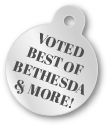To Buy Provigil Online Visit Our Pharmacy ↓
 Provigil Vs. Adderall: Key Differences Explained
Provigil Vs. Adderall: Key Differences Explained
How Provigil and Adderall Work Differently
I remember a late shift when a colleague explained the contrast: one drug gently nudges brain circuits that support wakefulness by boosting orexin and histamine signalling and subtly increasing dopamine, while the other floods synapses with dopamine and norepinephrine by promoting release and blocking reuptake. That difference shapes not just waking hours but feeling and focus, with a softer modulation on cognition versus a more direct stimulant surge.
Clinically, teh profiles lead to different effects: one provides steady alertness with fewer peaks, occassionally preferable for long shifts, while the other gives rapid, intense focus and energy that can spike heart rate. Individual goals and risk tolerance guide choice.
| Drug | Action |
|---|---|
| Provigil | causes modest dopamine uptake inhibition while boosting orexin and histamine systems to promote wakefulness |
| Adderall | triggers robust monoamine release and blocks reuptake leading to strong dopaminergic and noradrenergic stimulation |
Comparing Effectiveness for Wakefulness and Focus

I remember the first time I tried provigil and, in contrast, a stimulant like Adderall; the wakefulness effect felt cleaner and less jittery. Clinically, provigil promotes alertness through wake-promoting pathways, while Adderall increases catecholamines to boost focus and drive.
For tasks requiring sustained attention, stimulants often yield faster, stronger improvements in short-term concentration, but side effects can spike. provigil's benefit is steadier performance over hours with fewer peaks and troughs, making it preferable for extended vigilance rather than hyperfocus.
Individual response varies, so clinicians weigh efficacy against tolerability; stimulants can improve task initiation, whereas provigil is less likely to cause rebound sleepiness. Definately discuss goals, comorbidities, and dosing with a prescriber to aquire optimal plan.
Side Effects, Risks, and Long-term Safety Profiles
In everyday life a patient weighing options often notices different immediate reactions: provigil tends to bring milder stimulatory effects, headaches and nausea, while Adderall's amphetamine action more commonly causes increased heart rate, jitteriness, appetite suppression, and anxiety. Clinicians watch for allergic reactions and rare but serious skin or cardiac events, counseling patients when to seek help.
Over months and years the profiles diverge further: provigil is generally viewed as lower risk for dependence and cognitive disruption, yet long-term safety data remain limited; stimulant therapy carries clearer risks of tolerance, cardiovascular strain, and potential misuse. Shared management includes baseline screening, periodic monitoring, dose adjustments, and discussions about sleep, mood, and goals in the enviroment of care.
Addiction Potential and Dependency: What Studies Say

Patients often ask whether these medicines lead to long-term cravings or dependence; clinicians tell stories that mix caution and reassurance, highlighting individual vulnerabilities and the role of dosage, context, and prior substance use history patterns.
Randomized trials and observational studies contrast amphetamine outcomes with modafinil's profile; provigil shows lower self-reported euphoria and reinforcing effects, though researchers definately caution that long-term data and misuse reports are not completely absent, however still.
Meta-analyses indicate dependence incidence is substantially higher with stimulant amphetamines than with wakefulness agents; modafinil-related dependency remains rare, yet high-dose off-label use and polydrug patterns elevate risk, requiring ongoing clinical vigilance, especially in vulnerable patients.
Practitioners should screen for prior substance use, favor evidence-based indications, monitor for escalating doses or doctor-shopping, and educate patients that while provigil appears lower risk, no medication is free of misuse potential or adverse outcomes
Dosing Strategies, Duration, and Onset Differences
Morning rituals shape how take medicines. Clinicians often start provigil at moderate doses for daytime wakefulness, adjusting by tolerability and need. Patients report gradual benefits over days.
By contrast, stimulants may act faster but require careful titration; small increments prevent excessive stimulation. Side effects guide pacing, and scheduling around sleep is a key practical tip.
| provigil-1-2h |
Doctors recomend individualized plans that watch onset, peak, and carryover while matching daily routines. Definately discuss interactions, other meds, and follow-up checks; regular reviews let clinicians refine doses for sustained safe benefit and adherence.
Choosing Safely: Cost, Accessibility, and Legal Status
Patients often face sticker shock when choosing wakefulness meds. Provigil’s brand price is high, and generics lower cost but access still depends on prescriptions, insurance formularies, and clinic policies. Definately verify coverage, copays, and prior authorization steps before committing to a treatment plan. MedlinePlus FDA label
Navigating legality and availability matters: modafinil is prescription-only in many countries and controlled in some jurisdictions, so possession without a license can have legal consequences. Consult local regulations, discuss workplace policies, and consider telehealth options to safely aquire legitimate prescriptions from qualified physicians. DailyMed PubMed

